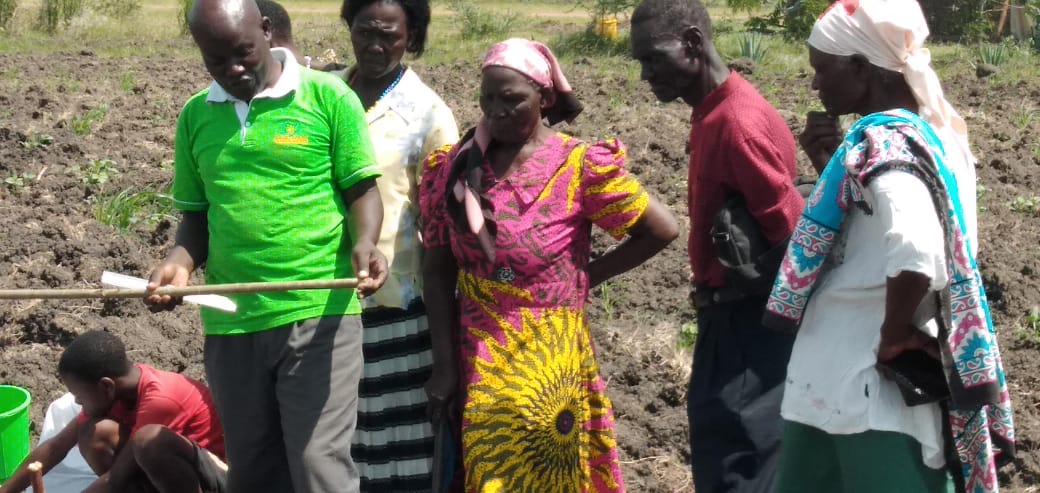The impressive performance of genetically modified (GM) insect-resistant cotton on some Kenyan farms has prompted the government to permit full commercialization of the crop.
Although the first Bt cotton crop has yet to be harvested, farmers growing it on demonstration plots have observed a high germination rate, early maturation and resistance to common pests, especially the troublesome African bollworm, said Agriculture Cabinet Secretary Peter Munya. The crop is genetically engineered to resist insect pests, thus reducing pesticide use while increasing yields.
“This has given us the confidence and assurance that Bt cotton can now be produced commercially,” Munya declared. “It is a historic milestone for Kenya’s agricultural sector, particularly the textile industry.”
He noted that the journey to commercialize Bt cotton has been long and tedious, with many challenges, including misunderstandings, public suspicion and a deliberate campaign to discredit the benefits to be derived by farmers, the textile industry, environmental and human health and Kenya’s economic well-being.
The government launched the process of testing Bt cotton seed for commercial production in Alupe University College in Busia County this past March before establishing 700 demonstration plots in Baringo, Busia, Kisumu, Kwale and Tana River counties. Kenya sees a thriving cotton and textile industry as supporting socio-economic development and generating jobs.
Munya said the aim of promoting cotton production is to increase production and productivity, empower farmers and enhance the efficiency of cotton processing and textile manufacturing by developing an enabling policy and regulatory framework.
“With commercial production of Bt cotton, Kenya has the potential of joining the big textile league and improving the livelihoods of millions of people who will be engaged directly and indirectly in the value chain,” Munya said. “Currently, cotton production stands at 20,000 bales. As we roll out commercial production of Bt cotton, we hope to progressively enhance production to reach 200,000 bales by 2022.”
To achieve that goal, the government will procure and distribute Bt cotton seed and pesticides to 23 counties in Kenya deemed suitable for cotton production during the 2020-21 fiscal year. The seeds will be provided to farmers at no cost.
“We have already secured 16.3 metric tonnes of Bt cotton seed for planting during the October-November season in the Eastern region,” he said. “As we seek to enhance cotton production, the government is currently negotiating a free trade agreement with the United States and the United Kingdom.”
The government expects a positive outcome in the negotiations, Munya said, while noting they carry the associated responsibility of ensuring that Kenya’s capacity can supply expanded markets once they are secured.
Farmers’ experience with Bt cotton
James Riaga from Kisumu County is one of the hundreds of Kenyan farmers growing Bt cotton in demonstration plots. He noted that the Bt variety seems to mature earlier and yields appear promising.
“I planted Bt cotton in June and it is has already matured for harvesting and I am about to harvest,” he said. “Conventional varieties, if planted in April, the harvest is usually in November. The yields are good. One plant of Bt cotton yields about 40-100 bolls while the conventional cotton we have been planting yields 30 bolls.”

James Onyango, another cotton farmer in Kisumu County, said he is looking forward to receiving Bt cotton seed within the next two weeks. “We have been longing to plant Bt cotton because we have seen its performance against the conventional varieties we have been planting. I have visited Bt cotton fields in farms within Nyanza region and I found out that it is high yielding, has low production costs and does not use much pesticides to control pests. For the conventional varieties I have been planting, much of my profit goes into production which is expensive and causes environmental pollution,” Onyango explained.
Jesse Nyaga, a farmer from Kirinyaga County, said he and many other farmers in the region prepared land in October to plant Bt cotton. “However, due to delayed access to seeds, I decided to plant maize in my farm. The land could not stay bare but I still hope to plant Bt cotton once I receive the seeds.”
‘Taste of technology’
Though he has limited knowledge about genetically modified organisms (GMOs) and Bt cotton, Nyaga said he has learned that they offer advantages that can help him improve yields. His only worry about growing Bt cotton is the delay in acquiring seed. “I simply want to feel the taste of technology,” he told the Alliance for Science.
Dr. Charles Waturu, the principal researcher on Bt cotton at the Kenya Agricultural and Livestock Research Organization (KALRO), said that production of hybrid seed is technically a very complex undertaking that cannot normally be done on a large scale because it is labor-intensive and requires manual cross-fertilization. Production of the hybrids will therefore be tied to commercialization, with smallholder farmers identified and trained to produce hybrids, he said.
In anticipation of increased cotton production, cooperative societies are currently being revived and new ones are being started, he said. These organizations will make it easier for extension agents and others to reach farmers with technical assistance on growing Bt cotton and will also facilitate economies of scale that can help farmers procure inputs more cheaply.
